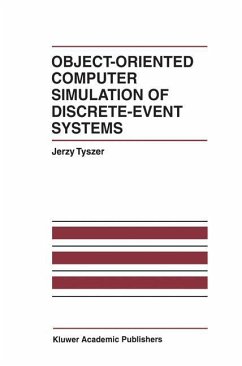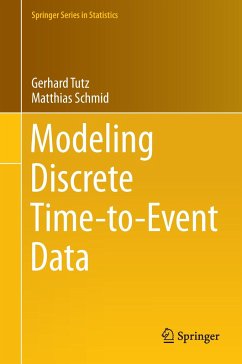
Discrete Event Simulation
Versandkostenfrei!
Versandfertig in 6-10 Tagen
26,99 €
inkl. MwSt.

PAYBACK Punkte
13 °P sammeln!
High Quality Content by WIKIPEDIA articles! In discrete-event simulation, the operation of a system is represented as a chronological sequence of events. Each event occurs at an instant in time and marks a change of state in the system. For example, if an elevator is simulated, an event could be "level 6 button pressed", with the resulting system state of "lift moving" and eventually (unless one chooses to simulate the failure of the lift) "lift at level 6".A common exercise in learning how to build discrete-event simulations is to model a queue, such as customers arriving at a bank to be serv...
High Quality Content by WIKIPEDIA articles! In discrete-event simulation, the operation of a system is represented as a chronological sequence of events. Each event occurs at an instant in time and marks a change of state in the system. For example, if an elevator is simulated, an event could be "level 6 button pressed", with the resulting system state of "lift moving" and eventually (unless one chooses to simulate the failure of the lift) "lift at level 6".A common exercise in learning how to build discrete-event simulations is to model a queue, such as customers arriving at a bank to be served by a teller. In this example, the system entities are CUSTOMER-QUEUE and TELLERS. The system events are CUSTOMER-ARRIVAL and CUSTOMER-DEPARTURE. (The event of TELLER-BEGINS-SERVICE can be part of the logic of the arrival and departure events.) The system states, which are changed by these events, are NUMBER-OF-CUSTOMERS-IN-THE-QUEUE (an integer from 0 to n) and TELLER-STATUS (busy or idle). The random variables that need to be characterized to model this system stochastically are CUSTOMER-INTERARRIVAL-TIME and TELLER-SERVICE-TIME.












